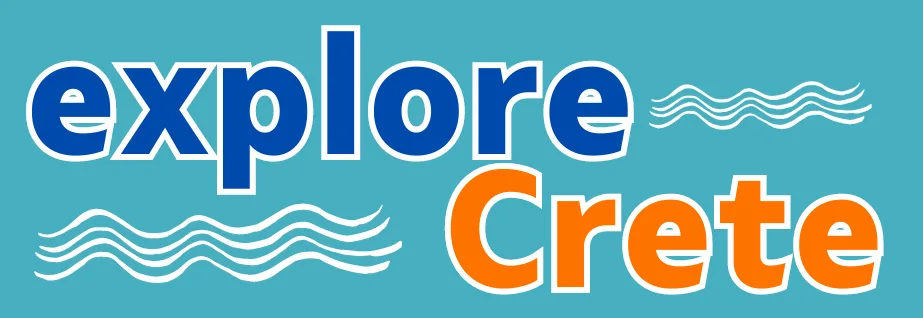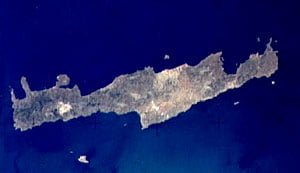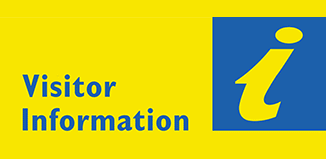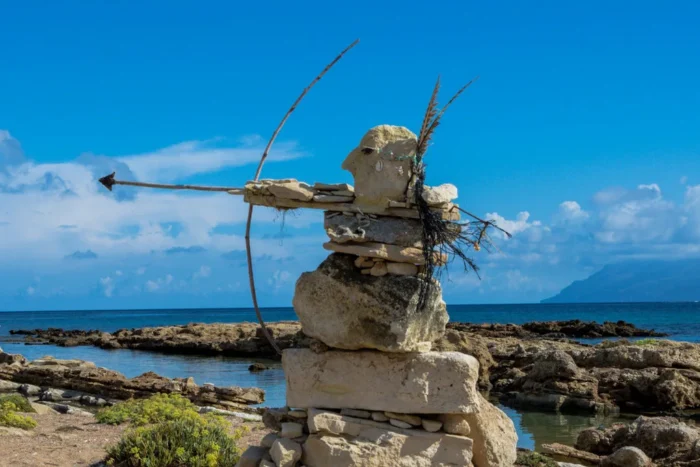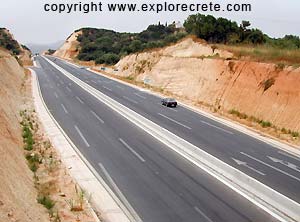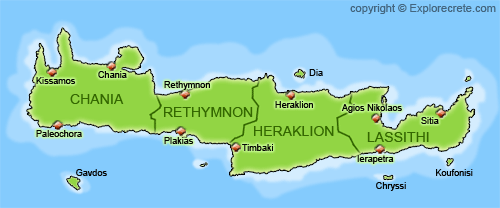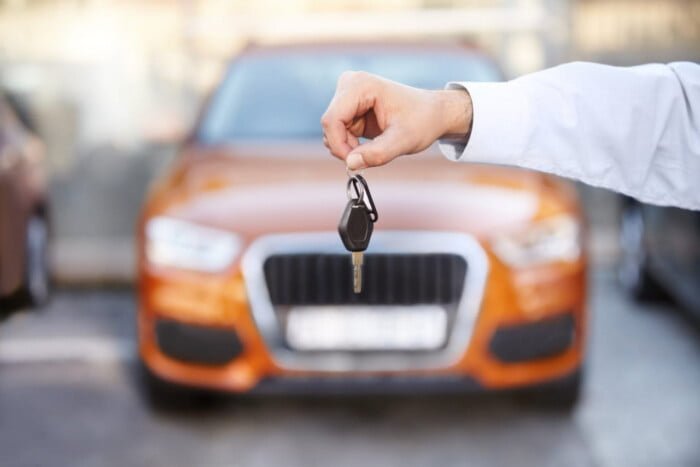Driving in Italy en route to Greece
Traveling through Italy can be an exciting experience, especially for those traveling from Northern Europe to Greece. The Italian landscape provides a picturesque backdrop with its varied terrain and historic sites. In this article, we focus on driving in Italy, covering essential aspects such as navigating the autostrada, understanding local traffic laws and getting the most out of your road trip. From the bustling cities of the north to the tranquil countryside, driving in Italy is an adventure that combines cultural richness with the practicalities of modern travel.
- Heavy traffic, like lorries and trailers, have so far not been allowed to drive on Sundays between 07.00 – 20.00 o’clock.
- In 2004 from the 3rd of July until the end of August this ban applies also to Saturdays. This is because of the very intensive traffic during the vacation period in Europe.
- The northern part of Italy looks much the same as Austria (SüdTirol with the many well-known ski resorts). The roads are also the same with nice views but also many tunnels and curves.
- Soon however we reach the valley below and a different landscape: Rivers, fruit trees, vine-yards and castles on the slopes.
- Personally I love to drive in Italy. The rhythm and the pace are good and the Italian drivers are very skilful.
The Autostrada
If you want to go fast, you choose to continue on the Autostrada. These roads are owned by a private company and you have to pay toll.
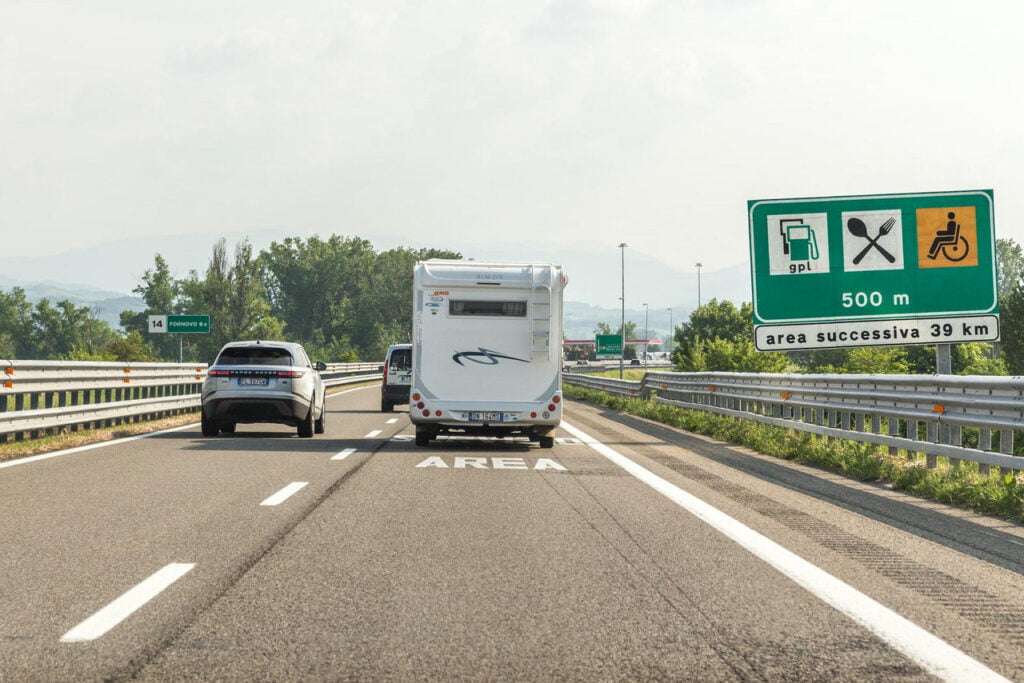
Toll
- At the toll station you get the ticket (go to the unmarked entry gates or the ones marked with Biglietto and take a ticket from the machine) when you enter the Autostrada.
- You pay when you exit, in other words here you pay for the distance you drive.
- Other parts of the Autostrada can have fixed amounts.
- Bring cash money in Euro.
- The easiest way to pay toll is to use a major credit card at the exit ramp.
- Look for a lane with a large sign showing the pictures of the various credit cards.
- First insert your ticket (the arrow should point forward), then your credit card (the hologram out). If the machine starts to talk, it tells you to turn your card the other way.
- Push the red button to get your receipt when you have retrieved your credit card.
Driving in the Autostrada – Rules
- When you have passed the toll station, you find signs telling you the destinations, which you are able to reach from the Autostrada.
- As the names may not be the same in your own language as in the Italian language, it is a clever idea to have a co-driver to navigate and to know the names “the Italian way”.
- The Autostrada usually has two lanes in each direction but there are also parts with three lanes.
- The entrance and the exit lanes are shorter and often with more sharp and tight curves than the ones on the German Autobahn.
- Make sure the Autostrada is free to enter, if not be prepared to make a stop to let the fast-moving traffic pass.
- Also when driving along the Autostrada be careful when passing by an entrance.
- Be prepared to give space to cars entering from your right.
- Keep a safe distance from the cars ahead of you.
- No u-turns are permitted.
- To stop on the Autostrada is permitted only in emergency parking areas or parking lanes.
- On the autostrada, you must drive with your lights on at all times.
- On the electronic signs you can see the following message:
In Autostrada Anabbaglianti Sempre Accesi = Keep your lights on the Autostrada. - The left lane is of course the passing lane and the traffic here is fast, very fast.
- Have a good look in your mirrors before you enter this lane in order to overtake slow going traffic and always use your blinkers.
- In Italy there are almost no slow drivers in the fast lane (as often is the case in Germany) and the discipline is fantastic.
- The Italian drivers are aggressive and drive fast, but as said above very skilful.
- If you stay too long in the left lane, you will soon have a car coming from behind flashing its head-lights to make you move back to the right lane again.
- If you don´t, the driver will probably stick to your tail until you do, in other words it is better to slow down and let him pass. In this case defensive driving is wiser than aggressive.
- In case your car have a breakdown use the emergency telephones placed every 2 km or your mobile phone. Call 116 The Automobile Club d’Italia (ACI), FIA and AIT member. Soon there will be a repair service truck to assist and help you. This is a great service that offers free tows to visitors driving in Italy with foreign licence plates
- If you are involved in an accident where cars are damaged or passengers injured, it is important to call the police on 113 and ambulance on 118.
- Also contact witnesses if any.
- To avoid traffic jams or getting stuck** on the Autostrada tune in your car radio on fm 103.3 Isoradio. Again a very good station broadcasting music and traffic updates. The service is in Italian, English, French and German.
** Once we were stuck for almost 3½ hours because of an accident in one of tunnels on the Brenner Autostrada. It is a good idea to bring along something to drink and maybe also some small food to eat.
*** One more thing; it is not funny if you have to pee during a stop like that , so don’t drink too much. - There are plenty of rest areas and service stations ( Autogrill is the biggest I think) along the Autostrada.
They have coffee shops and /or restaurants and also restrooms. The food is usually quite good. Why not pay a visit to their “shop”, where you are able to buy all kinds of Italian speciality foods and beverages. This is an opportunity we use every time, when we are on our way back to Sweden again. The Italian wines, cheeses and the ham from Parma are nice to bring home.
Before you leave your car in a rest area always remember to take all your valuables along with you.
More useful info
- Children under four cannot travel unless they use a suitable restraint system. Children between four and 12 cannot travel in the front unless using a suitable restraint system .
- A new law has been implemented from 2004-04-01. Outside urban areas you have to wear a Warning and- visibility vest when walking on the road or on the emergency lane or maybe changing a wheel. If you are caught without this vest you, then you will be fine. Iin other words it will be wiser to get one on time…
- Dipped headlights have to be used in poor daytime visibility, and in all tunnels at all times. Motorcycles must use dipped headlights during the day at all times.
- Seat belts front and rear are obligatory everywhere.
- Warning triangle is compulsory.
- Cellular phones are not allowed when driving unless you use handsfree equipment.
- If you are stopped with more than 0,05 % alcohol in your bloodstream you will get fines or even suspension of your driving license.
- Info about traffic and conditions on the roads in Italy: Italian Highway Association
Important Phone Numbers in Italy:
- Police 113
- Fire Service 115
- ACI 116
- ambulance 118
Speed Limits in Italy and Other Info
- 50 km/h in urban areas
90 km/h outside of urban areas
110 km/h on highways
130 km/h hour on autostrada
150 km/h may be the limit on some 3-lane Autostradas with emergency lanes.
ATTENTION. These speed limits are often changed when weather is bad and wet. - Radar traps are frequent and the on-the-spot-fines are very heavy as they are for all traffic offences in Italy. Remember to get an official receipt from the policeman.
- Petrol: Unleaded petrols are called Benzina.
Diesel is called Gasolio - If you are driving on other roads than the Autostrada keep in mind that the petrol stations usually are closed during the siesta (from noon until about 16.00 in the afternoon). If you are lucky though, you might find a self-serve pump.
- It is not illegal to run out of petrol on the Autostrada like it is in Germany.
- Petrol is expensive in Italy. Are you going by ferry to Greece wait to refill your tank there.
Tips that apply to all 3 countries (Germany, Austria, Italy):
- The roads out of major cities to the beach or to the mountains are overcrowded on the weekends in the summer and in the vacation month of August .
- During winter season there are also a lot of people going to the mountains to ski.
- Usually when it is raining or snowing in these countries, it is heavy. Be ware of all the water on the roads especially in the wheel-tracks. Reduce your speed.
- If you stop to rest, do it in a place with lot of people around. Do not choose a deserted parking lot, where it is easy for road pirats to rob you. Unfortunately they have become quite common along the European roads.
- Never leave valuables in your car, not even if you leave it out of sight for a couple of minutes. The pirates are very professional and work fast.
- I hope that these lines will be helpful to everyone planning to go by car through Germany, Austria and Italy for a vacation in Greece.
- Of course there are more rules and more to be said but this is not meant to be a comprehensive document. I have tried to write down the most important.
- Rules and laws will of course change over the time, which means I cannot guarantee the accuracy and cannot be held responsible in any way for any kind of consequences because of that.
- Driving in Crete and Greece is special but I will not comment on that. Yannis has already given his view on this subject.
- Our route goes from Malmö in Sweden by ferry to Rostock in Germany and continues via Berlin, Leipzig, Nürnberg, München, Innsbruck in Austria, Brenner and Italy to the ferry in Venice.
- After a long one day on road it is nice to rest for the night. On the following day we spend some hours in Venice before it is time to drive on board one of the Minoan-Line ferries. Time to relax, enjoy the sea and the nice service on board.
Good luck on the roads and on the sea to Greece,
Lars Magnusson
Read more:
© explorecrete.com All Rights Reserved. Reproduction or copying without permission is prohibited.
